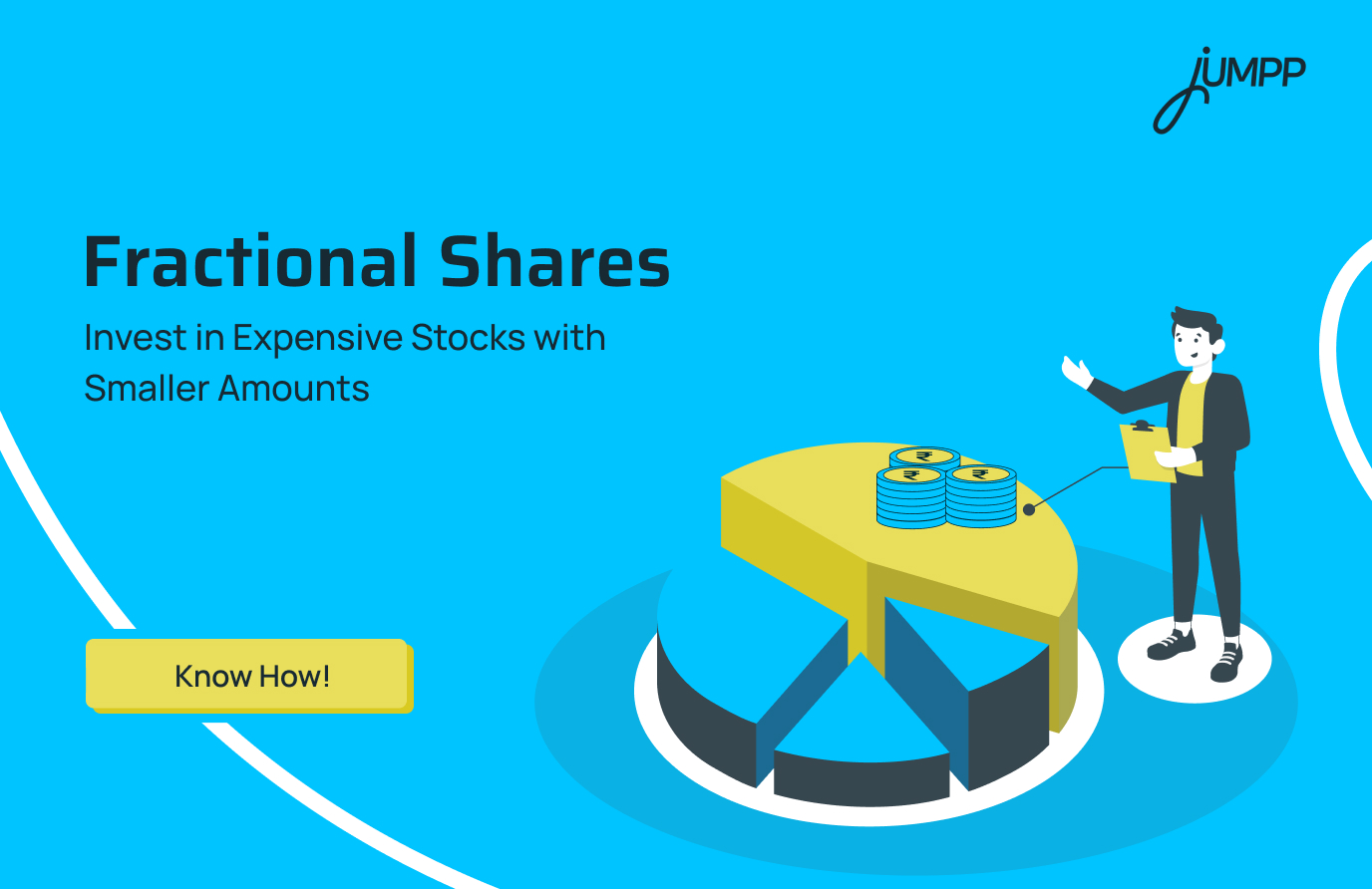Fractional Investing: A Smarter Way to Invest in High-Value Stocks with Small Amounts

If you have ever wanted to invest in India’s top 10 highest-priced stocks, or specifically in MRF, which costs ₹1,48,150.00 as of July 12, 2025, there is one thing that often stands in the way. The price of a single share. When a stock trades on the higher end, most investors tend to hold back. But now, there is a smarter way to start investing. It’s called fractional investing.
It allows you to begin with as little as ₹500 or ₹1,000. Thus, instead of buying a full share, you invest in a portion of it. Your returns and dividends are also calculated in the same proportion.
This simple approach gives you access to some of the most valuable companies across the globe. You no longer need to wait or save for months just to afford one share. You can start investing in quality brands without being left out. Fractional investing is removing the old limitations. It is making stock ownership more equal, more flexible, and more accessible.
Let’s understand what fractional investing really is and how it helps everyday investors take their next step forward.
What is Fractional Investing?
In simple terms, fractional investing means buying only part of a stock and not the full unit.
Let us say that you want to invest in a stock that trades at ₹10,000 per share. With traditional investing, you will have to put in the full ₹10,000 to own just one share. But with fractional shares, you could invest ₹500 and own 1/20th of that stock.
This way, you are still participating in that company’s performance. However, it happens just in proportion to your investment.
What is a Fractional Share?
A fractional share is a small part of one full share of a company’s stock. It means you don’t own one whole share, but rather a piece of it. For example, instead of owning 1 full share of a company, you may own 0.25 or 0.5 of it.
Fractional shares are useful when the price of one share is too high. Not everyone can afford to buy stocks that cost ₹50,000 or more for just one share. That is where fractional shares come in. They allow you to invest smaller amounts and still become a part-owner in a company. This is the core fractional shares’ meaning.
How Fractional Shares Are Created
There are a few common ways people end up with fractional shares.
1. Dividend Reinvestment Plans (DRIP)
Some companies allow investors to use the dividend money they receive to buy more shares automatically. This is called a Dividend Reinvestment Plan.
If the dividend is not enough to buy a full share, the money is used to buy a fraction of a share instead. Over time, investors may collect many such small portions.
2. Mergers and Acquisitions
When two companies merge, they may offer a fixed number of new shares in exchange for the old ones. This ratio may not be a whole number.
So if a company offers 1 new share for every 2.5 old shares, and you owned only 1 old share, you will get a fractional share in return.
3. Stock Splits
Companies sometimes split their shares to make them more affordable. In some cases, the math of the split doesn’t work out evenly.
For example, in a 3-for-2 stock split, for every 2 shares you own, you get 3. If you owned 5 shares before the split, you would end up with 7.5 shares after the split. That 0.5 is a fractional share.
Can You Buy or Sell Fractional Shares?
Fractional shares are not traded directly on the stock exchange like full shares. You can only buy or sell them through a brokerage that offers this service. In India, certain platforms allow you to invest in US stocks using fractional shares. This is helpful if you want to start with small investments.
How Does Fractional Investing Work?
There are two approaches here, one for domestic stocks and one for international stocks.
In many countries, like the United States, stock trading platforms allow investors to buy fractions of high-value shares. Behind the scenes, a full share is bought by a broker, and then smaller parts are digitally assigned to different investors.
Let’s say Apple stock is trading at ₹15,000 per share.
You invest ₹1,500.
You now own 0.1 share.
You are still part of Apple’s performance. If the stock price rises by 10 percent, your investment does too. You also get a share of the dividend in the same proportion.
Globally, this has helped many new investors start investing without saving for months just to buy one stock.
Can Indians Buy Fractional Shares?
As of now, Indian exchanges like NSE and BSE do not allow fractional investing in Indian stocks. You must buy a full share when investing in companies listed in India.
So if one share of Infosys costs ₹1,600, and you only have ₹500 to invest, you cannot buy it. You will need to wait until you have the full amount.
It’s a regulation that all stock brokers in India must follow. There is no legal way to buy part of an Indian stock yet.
Then, how are Indians investing in fractional shares?
Even though fractional investing is not allowed for Indian stocks, many Indian investors are already investing in fractional shares of US-listed companies.
Investing in US stocks works differently. Your money needs to be converted into US dollars and then sent abroad. This is called a remittance. It means transferring money from one country to another. Unlike regular payments, remittances are international and come under strict regulation by the RBI, through a law called FEMA.
Is Fractional Investing Legal and Safe?
Yes, with the right platforms, it is.
When you invest in fractional US shares through Indian brokers, you’re transacting via a foreign partner broker regulated by the SEC or FINRA. Your money is sent under the Liberalised Remittance Scheme (LRS), which allows Indians to invest up to $250,000 per year abroad.
The Liberalised Remittance Scheme (LRS) is a policy by the RBI that allows Indians to send money abroad without special approval.
- You can send up to $250,000 per financial year (about ₹2 crore) for purposes like investing, studying, travelling, or medical treatment.
- Any resident Indian individual (even minors). It does not apply to companies or HUFs.
- Every remittance under LRS must be linked to your PAN card.
- If you send over ₹7 lakh, you’ll have to pay Tax Collected at Source (TCS). The rate recently increased to 20% for investments abroad. A small GST may also apply depending on the platform.
In terms of custody, these shares are held in your name or under a pooled structure, but the tracking is transparent, and platforms give full visibility into your holdings.
Benefits of Fractional Investing
1. You Can Start Small
In traditional stock investing, if a single share of a company costs ₹90,000, you need the full amount to buy even one. That becomes a roadblock for many Indians, especially first-time investors or college students.
With fractional investing, you don’t need to wait. You can start with as little as ₹500 or ₹1,000 and still own a portion of that share. It makes investing far more accessible for those with limited capital.
2. Access to High-Quality Global Stocks
Many of the world’s top companies, such as Amazon, Apple, Google, and Tesla, are listed in the US. Their share prices are often out of reach for the average Indian investor.
Fractional investing bridges this gap. You may not be able to buy one full share of Amazon, but you can still invest ₹2,000 and get a small fraction. That fraction grows in value if the stock performs well.
3. No Need to Save Up or Delay
Often, people postpone investing because they feel they need a lump sum to get started. This delay can cost valuable time in the market.
Fractional investing allows you to begin immediately, even with small savings. Instead of waiting six months to save ₹60,000 for one stock, you can begin with ₹2,000 and put the rest in gradually.
4. Diversification Becomes Easier
Diversifying your portfolio means spreading your money across different companies or sectors so your risk is balanced. But when each stock is expensive, building a diversified portfolio becomes hard.
Fractional investing solves this. With ₹5,000, you could invest ₹1,000 each in five different US companies, even if each of those stocks trades above ₹50,000. You get variety without overspending.
5. Encourages Real Investing Behaviour
Fractional investing isn’t just about affordability. It also encourages people to understand how stocks work, monitor company performance, and learn the basics of portfolio building.
Want to explore more smart strategies beyond fractional investing?
Learn about different types of investments to diversify your portfolio and grow your wealth more effectively.
Who Should Consider Fractional Investing?
You should consider it if:
- You’re starting your investment journey with ₹500–₹5,000 per month
- You want exposure to global stocks.
- You want to invest in high-value Indian stocks once they open up
- You’re looking to test ideas before committing large capital
- You want to diversify without over-committing to any one stock
Why Fractional Shares are the Future of Investing in India
The Indian investor base is getting younger, smarter, and more self-directed.
They don’t want to be told to wait until they earn more.
They want access now, on their terms.
Fractional investing supports that mindset.
It allows users to:
- Buy quality stocks without saving up for months
- Stay diversified across sectors
- Invest frequently, without worrying about unit prices
It removes the artificial barrier of “price per share” and instead focuses on “value per rupee invested.” That’s a fundamental mindset shift.
Conclusion: Small capital. Big potential.
Investing in the stock market should not be a luxury.
With fractional investing, you don’t need to choose between high-quality companies and affordability. You can start with ₹100. You can build gradually and take real ownership of brands you believe in.
However, this is not yet a trend. It’s a leap forward in how investing for the everyday Indian shall change soon!
Looking for the best investment app to get started?
Discover our smart investment platform designed to help you grow your wealth confidently and conveniently. Try the best investment app now.
Fractional Investing- FAQs
Fractional investing can be worth it for those looking to invest small amounts in high-value stocks. It helps build exposure without waiting for large capital.
Fractional investments are when you buy a small part of a stock instead of a full share. This lets you invest in expensive stocks with limited funds.
Fractional trading in Indian-listed stocks isn’t allowed yet. But Indians can buy fractional shares of US stocks through global investing platforms.
You can make money on fractional shares just like full shares. In this, your returns match the percentage of the stock you own.
Fractional investment is generally safe when done through regulated platforms. You have to make sure the platform follows norms for cross-border investing.
The main disadvantage of fractional shares is limited control, like no voting rights. Also, not all platforms offer easy resale or full liquidity.






